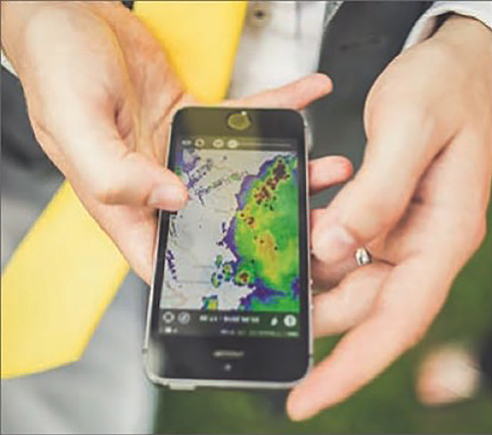5 Steps to Improve Your
Weather Know-How
By Tom Hoffman

In this weather technology-themed issue, we cite numerous examples of how advancements in technology are providing pilots with access to more and more aviation weather data, both before and during flight. That’s definitely a good thing. However, weather data, no matter how plentiful or accessible, is only helpful if you’re able to absorb and comprehend what you really need to make sound aeronautical decisions.
It helps to have a greater variety of mediums and methods of obtaining weather information. But the challenge is finding what resources work for you and knowing how to properly leverage the information they provide. To help you sharpen your weather know-how, here are five tips to consider.
1. Personal Minimums and Plan B:
When preparing for your next flight, make a conscious effort to pause and ensure you thoroughly understand the weather data at your disposal. Does having a 15-knot crosswind or ¾ mile visibility in fog align with your personal minimums and your aircraft’s capabilities?
If it’s been a while since you last assessed your personal weather minimums, consider what red-flag items would give you pause and how you would address them. Don’t wait until you’re in the thick of it to figure out how you would handle a weather emergency. The odds for a happy outcome are not in your favor. Rerouting or diverting is much easier — and less stressful — when you have some wiggle room and pre-decided alternates from which to choose. In other cases, you’ll want to consider canceling the flight altogether.
2. Check the Expiration Date:
When you’re reviewing weather data, it’s important to also consider its shelf life. Some weather products could be hours old when you receive them. Note the observation times in any particular report and/or the product validity time span, so you always know if you have the latest and greatest versions.
Comparing forecasts with more current weather information is also a good way to see the “big picture” and whether the weather is developing earlier or later than predicted.
3. Building on the Basics:
In your quest for a complete weather briefing, it might help to think of how three basic elements of weather (temperature, wind, and humidity) can combine in various ways to impact a flight in three primary ways (visibility, turbulence, and aircraft performance).
Studying and organizing weather data in terms of how it can affect your specific flight can help you make a more informed decision and more accurately assess whether both pilot and plane are up for the challenge.
4. Beware of the Latency:
Another good pointer is to avoid overreliance on in-cockpit information weather displays. Yes, they are excellent tools to improve your weather situational awareness, but the information they relay may not tell the whole story, no matter how sophisticated they are.
Bottom line: Don’t fixate on a NEXRAD weather display to the exclusion of your other flight management tasks — and that includes looking out the window. Use weather displays strategically, not tactically.
5. Expand Your Weather Horizons:
Strive to continue learning about weather and get familiar with as many available resources as possible (see Learn More below). For example, are there weather cameras (weathercams.faa.gov) along your route that will allow for a sneak peek at conditions? A little extra weather know-how can go a long way towards a safe flight!
Tom Hoffmann is the managing editor of FAA Safety Briefing. He is a commercial pilot and holds an A&P certificate.
LEARN MORE
“I’ve Got Weather — Now What Do I Do With It?” Mar/Apr 2015, FAA Safety Briefing, p. 26 bit.ly/FAASB-Arc
Reprinted with permission from FAA Safety Briefing. Visit the Flight Safety Briefing website: https://www.faa.gov/news/safety_briefing/.



